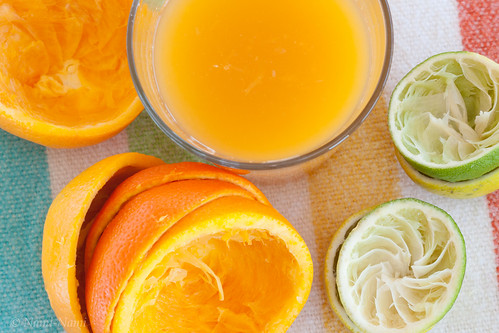Sunday, May 29, 2011
Food & Travel, June 2011
If you're thinking of travelling to Estonia this year - and have thought about visiting the islands (especially Muhu and Saaremaa), then you must check out Frances Pearce's article "Baltic Flavours" in the June 2011 issue of FOOD and TRAVEL. Lots of good suggestions and mouth-watering photos.
Photography: Emma Wood (you can see more photos shot in Estonia when browsing her "Gourmet Traveller" folder).
Thursday, May 26, 2011
RHUBARB RECIPES @ NAMI-NAMI
It's rhubarb season just now, and here's a selection of delicious ideas to try:
Estonian rhubarb cake with sponge topping:
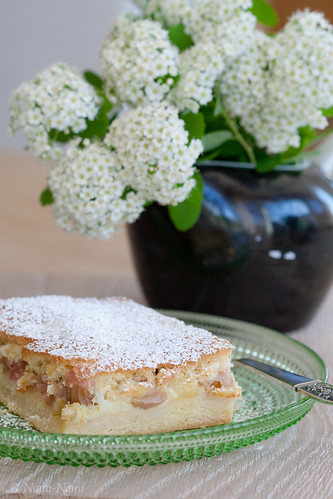
Rhubarb and rye bread soup (June 2011)
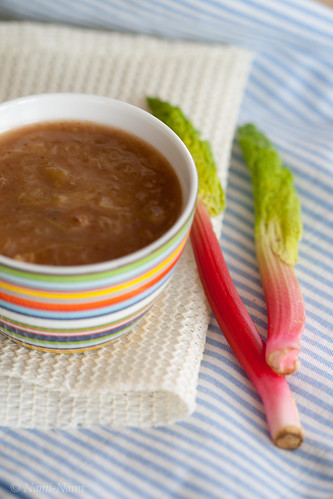
Baked rhubarb cheesecake (May 2011)

Rhubarb ripple cheesecake (June 2010)

The best rhubarb muffins ever (May 2007)

Pretty rhubarb tart (May 2010)
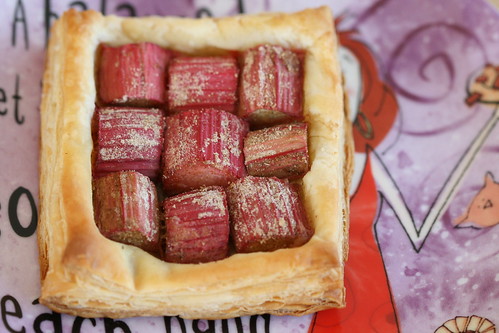
Creamy Vanilla and Rice Pudding with Rhubarb Compote (June 2009)

Home-Made Rhubarb Ice Cream (June 2009)

Spiced Rhubarb Cake (egg-free) (June 2009)
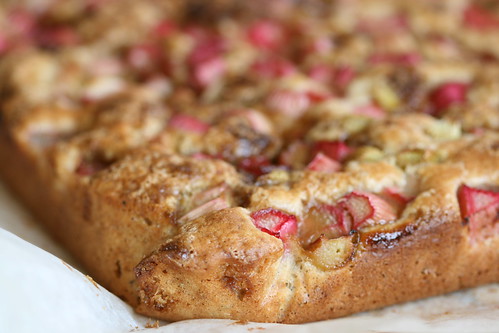
Rhubarb Fruit Soup aka Rhubarb Kissel (May 2009)
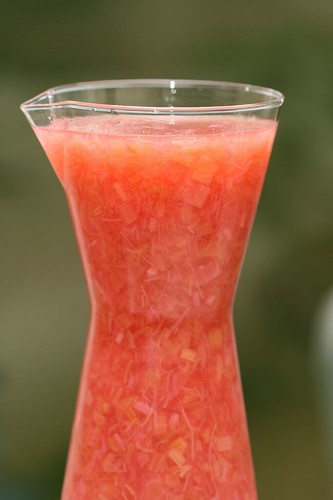
Vanilla Panna Cotta with Roasted Rhubarb (June 2008)

Rhubarb Sponge Cake with Almonds (June 2006)

Persian Lamb and Rhubarb Stew (May 2008)

Coconut Creams with Poached Rhubarb (May 2008)

Rhubarb and coconut pie (May 2007)
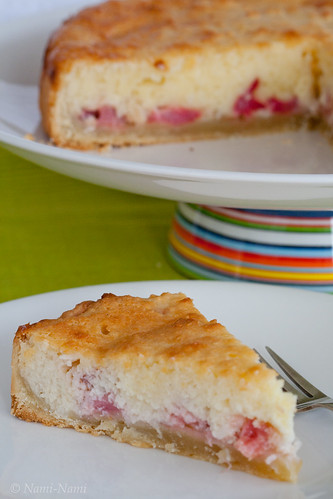
Rhubarb crumble (May 2007)

Rhubarb and ginger jam (May 2007)
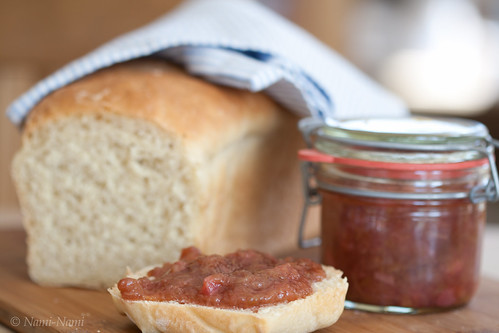
Estonian rhubarb cake with sponge topping:

Rhubarb and rye bread soup (June 2011)

Baked rhubarb cheesecake (May 2011)

Rhubarb ripple cheesecake (June 2010)

The best rhubarb muffins ever (May 2007)

Pretty rhubarb tart (May 2010)

Creamy Vanilla and Rice Pudding with Rhubarb Compote (June 2009)

Home-Made Rhubarb Ice Cream (June 2009)

Spiced Rhubarb Cake (egg-free) (June 2009)

Rhubarb Fruit Soup aka Rhubarb Kissel (May 2009)

Vanilla Panna Cotta with Roasted Rhubarb (June 2008)

Rhubarb Sponge Cake with Almonds (June 2006)

Persian Lamb and Rhubarb Stew (May 2008)

Coconut Creams with Poached Rhubarb (May 2008)

Rhubarb and coconut pie (May 2007)

Rhubarb crumble (May 2007)

Rhubarb and ginger jam (May 2007)

Wednesday, May 25, 2011
Juiced
Tuesday, May 24, 2011
Crostini with radishes and anchovy butter
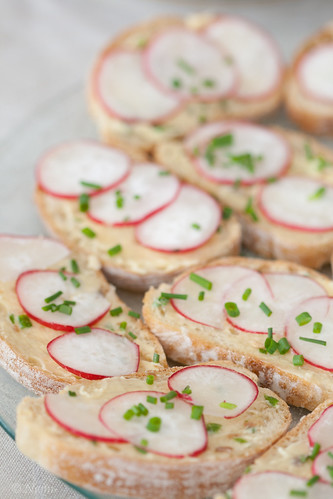
Here's a little something that I served at my birthday back in April. I spotted the recipe in Anne Rosso's Flickr photostream, and knew immediately that it'd go down well with my family and friends. I was correct :) The recipe is originally from Bon Appétit (Sliced baguette with radishes and anchovy butter). If you like the umami-note* that a good oil-preserved anchovy lends, then I heartily recommend this - super-easy to make and it looks pretty elegant.
Crostini with radishes and anchovy butter
(Krõbesaiad anšoovisevõi ja krõmpsuvate redistega)
Source: Bon Appétit (April 2011)
Makes about 20 canapés
1 baguette or ciabatta
Anchovy butter:
100 g butter, at room temperature
2 to 3 anchovy fillets
2 Tbsp finely chopped fresh chives
sea salt flakes
Topping:
young radishes
fresh chives
If using ciabatta, then cut it into to and then into thin slices. If you're using baguette, just cut it into thin slices. Place the bread slices onto a baking sheet and bake in a 200 C/400 F oven for about 5 minutes. Turn the slices around and bake for another 5 minutes, until the bread slices are slightly golden on edges. Cool.
Meanwhile, make the anchovy butter. Chop the anchovy fillets finely, cut chives into very short lengths. Mix anchovy and chives into the softened butter, add some sea salt flakes for extra flavour.
Spread the anchovy butter onto bread slices, garnish with thinly slices radishes and fresh chive.
* Check out Melissa's early post on a topic of anchovy umami.
Sunday, May 22, 2011
Crostini with Västerbotten cheese
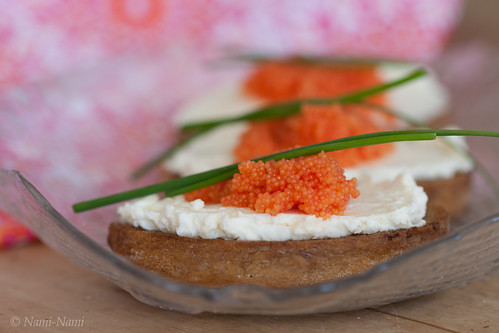
Another little recipe using the wonderful Swedish Västerbotten cheese. The recipe is Swedish as well, from a relatively new food magazine Lantliv Mat & Vin that K. brings me back from Sweden every now and then. You should use whitefish roe or löjrom ideally. Unfortunately it's difficult to track down in Estonia, so I had to settle for dyed herring roe instead.
Crostini with Västerbotten cheese cream and whitefish roe
(Krõbesaiad Västerbotteni juustukreemi ja siiamarjaga)
Source: Lantliv Mat & Vin 4/2010
Makes 12
12 thin slices of baguette
1 Tbsp butter
100 cream
100 ml grated Västerbotten cheese
100 g fish roe (preferably whitefish roe or löjrom)
freshly ground black pepper
fresh chives
Heat the butter on a frying pan, fry baguette slices lightly on both sides until golden. Cool.
Mix grated Västerbotten and cream cheese, spread on toasted bread slices.
Spoon the caviar on top, grind some black pepper over the cheese and garnish with chopped chives.
Saturday, May 21, 2011
Gardener's revenge: ground-elder and cottage cheese pie

Originally posted here.
A well-known (and much-hated) garden pest, ground-elder (Aegopodium podagraria, also known as bishop's weed and goutweed in English, naat in Estonian) has a long history of being used for medicinal purposes. However, it was also cultivated as a food crop in the Middle Ages, especially in Russia (and in Siberia in particular - the Russian Saint Seraphim of Sarov is said to have survived three years on eating mainly ground-elder while on self-exposed exile in a deep forest), Scandinavia, in Central Europe. Old Finno-Ugric peoples were keen consumers of ground-elder, too. According to some sources, old traders wrapped their vegetables into ground-elder leaves to keep them fresh looking and smelling - the leaves are high in essential oils and helped to keep the other produce fresh and aromatic, too. Young and tender ground-elder leaves can be added to soups, omelettes and stews. Blanched leaves can be mixed with cottage cheese and curd cheese. The leaves are high on Vitamin E, as well as vitamin C, they're rich in antioxidants, minerals, flavonoids and fibre. Dishes containing ground-elder are easily digestible, and have cleansing properties - so they're good for that spring-time detoxing :)

Make sure to use only very young ground-elder/goutweed leaves (like those on the photo above) - the big ones tend to be too bitter and rough. Pamela Michael, a well-known "herbal cook" and author of Edible wild plants and herbs, writes that "those of us who suffer from the weed in our gardens, should rejoice in the knowledge that we can eat the pest" :)
Intrigued? You can also use young ground-elder leaves to make delicious spring-time vanilla-scented muffins.
Ground-elder and cottage cheese pie
(Kevadine naadipirukas)
Serves 8 to 10
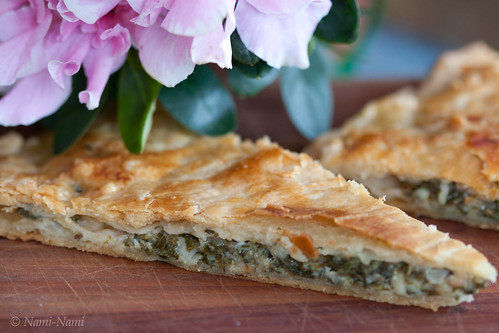
Pastry:
200 g butter
200 g sour cream
350 g all-purpose flour
a pinch of salt
Filling:
100 to 200 g young ground-elder leaves
1 Tbsp oil
one large onion (about 100 g)
300 to 400 g cottage cheese, drained
1 egg
1 tsp dried oregano
sea salt and freshly ground black pepper
Make the pastry: melt butter over moderate heat. Take the saucepan off the heat, stir in sour cream, flour and salt. Stir until well combined, then place into the fridge for about 30 minutes to rest.
Make the filling: wash the goutweed leaves carefully, drain lightly. Place onto a dry hot skillet and heat until wilted. Then rinse quickly under cold running water to stop the leaves from cooking further. Press to dry the leaves thoroughly, then chop roughly.
Heat oil on a heavy frying pan, add onion and sauté gently for about 10 minutes, until the onion softens. Add the chopped ground-elder leaves, cottage cheese, oregano, salt and pepper. Give it a stir, then add most of the egg and stir again.
Take the pastry out of the fridge, divide into two. On a flour-dusted table, roll out one of the pastry pieces into a large circle (approximately 40 cm in diameter or whatever the size that fits your oven sheet). Transfer onto a lined oven sheet, spoon the filling on top. Roll out the other pastry and cover. Press the edges tightly together, prick the top with a fork here and there.
Brush with an eggwash. Bake in a preheated 200 C oven for about 25-30 minutes, until the pie is lovely golden brown on top.
Thursday, May 19, 2011
Baked Rhubarb Cheesecake Recipe

Nothing new under the sun :) I took last year's favourite rhubarb cheesecake recipe, tweaked it a little, and ended up with yet another definite favourite. An exceptionally good-looking favourite as well :) The rhubarb is from a farm near Raplamaa (a county in Estonia), and the stalks were especially and beautifully pink this time - both inside and outside. Also, I never peel young rhubarb stalks. Hence the impressive colour scheme of the cake.
Baked Rhubarb Cheesecake
(Rabarbri-toorjuustukook)
Serves 8
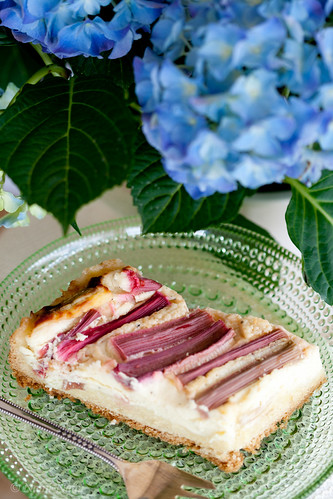
Base:
100 g unsalted butter, softened
85 g caster sugar (1 dl/100 ml)
1 large egg
180 g plain flour (3 dl/300 ml)
0.5 tsp ground cardamom
0.5 tsp baking powder
a pinch of salt
Cream cheese topping:
400 g full-fat cream cheese, softened
200 g sour cream or soft curd cheese
125 g caster sugar (1,5 dl/150 ml)
3 large eggs
1 tsp vanilla extract
Topping:
300 g young pink rhubarb stalks
a tablespoonful of demerara sugar
For the base, cream the butter and sugar. Add eggs, one at a time, thoroughly beating each time. Add the dry ingredients and stir until combined. Press the mixture onto the base and sides of a 26 cm springform tin lined with parchment paper. Place into the fridge to wait while you prepare the cheesecake mixture.
For the cheesecake topping, mix all ingredients thoroughly (you may use a whisk for a fluffier result).
To assemble the cake, pour the cream cheese mixture over the cake base. Scatter or lay the rhubarb on top, sprinkle with demerara sugar.
Bake in a preheated 200 C oven for 40-45 minutes, until the filling is set and the cake base cooked.
Remove from the oven and let cool completely before serving.
Wednesday, May 18, 2011
Kaneelirullid aka Estonian cinnamon rolls
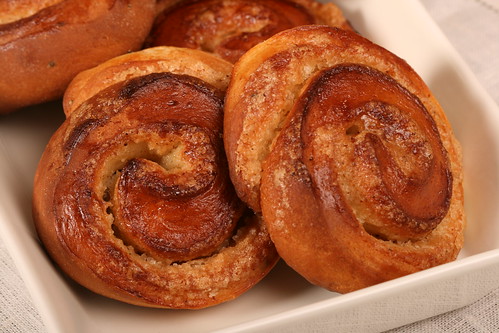
I know, I know. Spring is in full swing here in Estonia and I'm baking cinnamon rolls? I blame Joy the Baker, author of the Best Baking and Dessert Blog according to Saveur. Joy's Cinnamon Sugar Pull-Apart Bread has been taking Estonian foodbloggers by storm, and I've fallen for it as well. But I cannot possibly blog about the cinnamon sugar pull-apart bread - or about Finnish korvapuustit or voisilmäpullat or about Swedish kanelknutar - before I have blogged about the wonderful cinnamon bun recipe I've been using for well over a decade, if not longer.
These are smallish cinnamon rolls, at least when compared with its American counterparts. It's not a Classic Cinnabon for sure (a respectable 220 grams and a whopping 880 kcal!!!!), more like a delicious and less decadent alternative :D
The step-by-step photos were taken back in November 2008 :)
Cinnamon Rolls
(Kaneelirullid)
Makes 36 small pastries
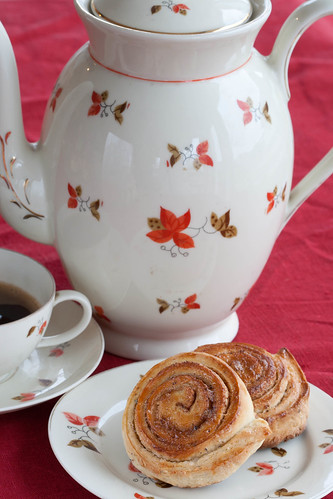
50 g fresh yeast*
50 ml (about 3 Tbsp) lukewarm water
300 ml milk
100 g unsalted butter
0.5 tsp salt
85 g caster sugar (100 ml)
1 tsp ground cardamom
600 to 650 g all-purpose flour
Filling:
100 g unsalted butter
85 g caster sugar
0.5 Tbsp ground cinnamon
For brushing:
1 small egg
Take a large mixing bowl, add the lukewarm water. Crumble the fresh yeast into the water, stir until combined.
Melt butter in a small saucepan, then add the milk (the resulting mixture should be about 37C aka body temperature) and slowly pour into the yeast mixture.
Add sugar, salt and cardamom. Now add the flour, a cupful at a time, mixing and kneading until you've got a nice soft and shiny dough.
Cover the bowl with a clean kitchen towel and let it prove in a draught-free warm place until doubled (for about an hour).
Meanwhile, make the filling. Melt the butter slowly, then add the sugar and cinnamon. Let it cool a little.
When the dough is risen, then gently knead it again and divide into three pieces. Working with one piece of dough at a time, roll it into a 23x30 cm rectangle on a lightly floured surface.
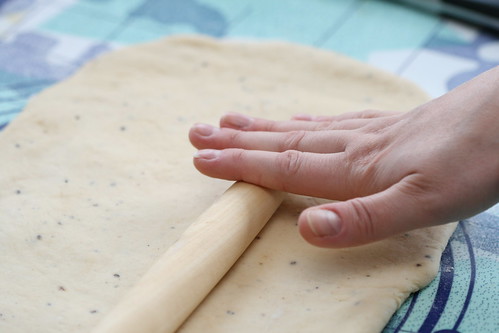
Spread with the butter mixture, right to the edges:

Then roll it up rather tightly, starting from the longer side:

Using a sharp knife, cut the roll into inch-long lengths (about 2-3 cm):

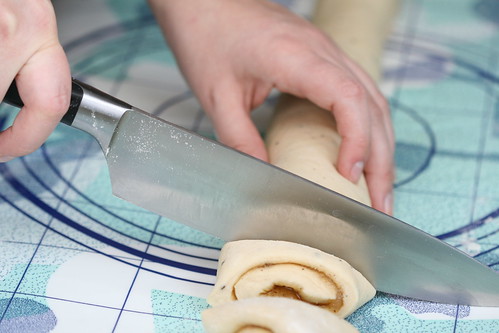
Transfer each roll onto a baking sheet:
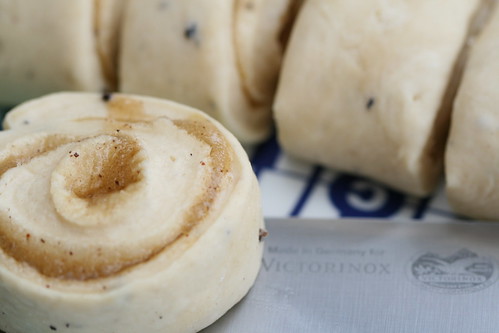
Bake in a pre-heated 220 C oven for about 12-15 minutes, until nicely golden brown. Transfer to a metal rack to cool.

NOTES:
* If you're not planning to eat all the cinnamon buns on the day of baking, you may want to place some of the warm buns into a large plate/bowl and cover with a kitchen towel while cooling - this helps to keep them soft longer.
* If you prefer using instant dry yeast, then mix the yeast with the other dry ingredients, add milk, water and melted butter and stir until combined.
Tuesday, May 17, 2011
Monstera deliciosa
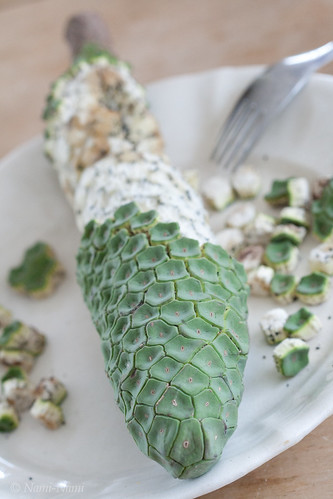
Here's a little something we had for dessert on Sunday. My dear K's mum brought it back from her trip to Madeira. I hadn't tried this before - well, I must admit I hadn't even heard of this particular exotic fruit before (it's a popular houseplant - meeldiv monstera in Estonian - but it doesn't bear fruit indoors). It tasted as we expected once we had read about it in the Internet - a cross between pineapple (flavour) and banana (texture). Not something I'd rush out to buy again, but definitely interesting and quite pleasant.
What do you think about this "Swiss cheese plant" aka "Mexican breadfruit" aka "Penglai banana"? Any interesting recipes out there?
Friday, May 06, 2011
A healthy breakfast for one
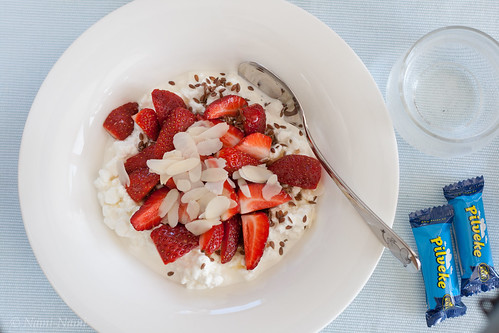
Just wanted to share a neat breakfast idea that I got from the Swedish Allt om Mat magazine - frukostkeso. It was a lovely change from the usual yogurt/cereal/open sandwich type of start to the day. I had to change the recipe a little, as I don't keep two types of linseed at home (the original recipe included both whole and ground linseed), I omitted the sunflower seeds and added a drizzle of agave nectar, one of my favourite sweeteners.
Cottage Cheese Breakfast
(Hommikune kodujuust)
Serves one
200 g cottage cheese (I used 4%)
1 Tbsp flax seeds/linseeds
a good drizzle of agave nectar
handful of strawberries, quartered
sliced almonds or coarsely chopped hazelnuts (I used almonds)
Take your brekkie bowl, spoon cottage cheese into the bowl. Sprinkle with flax seeds and drizzle with agave nectar. Place strawberries on top, sprinkle with nuts and serve :)
Thursday, May 05, 2011
Västerbottenspaj aka Swedish Västerbotten Cheese Tart
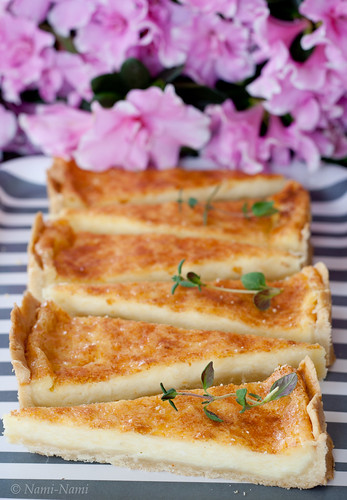
Västerbotten is an excellent hard cow's milk cheese from Sweden that reminds me (and many others) of a good youngish Parmiggiano Reggiano, but it's somewhat sweeter. Sadly it's not available in Estonia, but we've got good friends in Sweden who bring us a chunk every time they're popping over to Estonia. It is produced in the far North of Sweden, and the recipe and process has remained pretty much the same for the last 150 years or so. The Swedes love it, and it's considered the Emperor of Swedish cheeses (hence the crown on the packaging? See below ;))
You can read more about this cheese here (includes a link to the US supplier), here (Anne's Food), here and here (Wiki).
Although it's an excellent cheese for the cheese board, it's also a great cooking cheese. So far I've tried honeyed Västerbotten cheese spread, which was unusual but delicious (sweet and creamy). I got another half-a-kilo chunk of Västerbotten for my birthday (thank you, Annika & Markus!!!), and wanted to try the classic Västerbotten cheese tart. It's so simple - a plain shortcrust base, topped with a mixture of eggs, cream/milk and cheese. There are hundreds of similar recipes in the Internet, here's the way I made it.
You can serve it either hot or cold, accompanied with a nice sauce or perhaps a green salad. When cold, the tart can be cut into very thin and elegant slices that would be great as an appetizer.
Västerbottenspaj or Västerbotten cheese tart
(Västerbotteni juustu pirukas)
Serves 6

Pastry:
200 g plain flour
pinch of salt
100 g cold butter, cubed
1 egg
Cheese filling:
3 eggs
200 ml fresh cream (single, whipping, double or even half-and-half)
200 g Västerbottens cheese, coarsely grated
salt and freshly ground black pepper
Make the pastry first. Combine flour and salt in a bowl of your food processor, then add the cold butter and process until you've got coarse crumbs. Now add the egg and process again, until the dough comes together.
Flatten the dough into a disc and wrap in clingfilm. Place into the fridge for at least 30 minutes, preferably an hour.
Roll the pastry on a lightly floured surface into a circle large enough to fill a 26 cm springform or tart tin. Transfer the dough into the tin, pressing it gently to the edge and up along the sides. Blind bake in a 200 C oven for about 15 minutes. Remove from the oven.
For the filling, whisk the eggs and cream until combined, then season with salt and pepper. Fold in the grated cheese. Pour over the partially baked pastry base.
Return into the oven and bake for another 25-30 minutes, until the filling is set and the tart is golden (do not brown).
Monday, May 02, 2011
Herbed Ricotta Bruschette
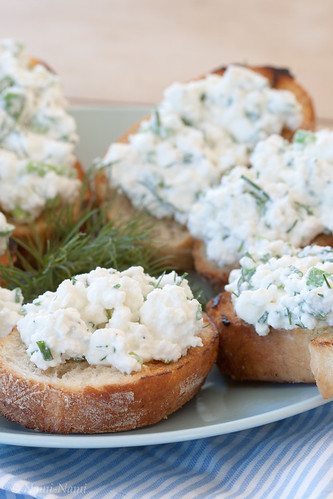
One of my newest cookbooks is How Easy Is That? by Ina Garten. It's the first Ina Garten's book in my extensive cookbook library and I love it (I noted that there are quite a few negative reviews on Amazon, but then I cannot compare this book to her five earlier ones). I've bookmarked probably every other recipe from it, and can vouch that her Roasted Shrimp Salad with Orange Mayonnaise is wonderful, and her tip to set the table with empty bowls and platters with post-it notes has already been tested twice and that indeed made the last minute preparations a lot less stressful.
These herbed ricotta bruschette(or bruschettas, if you want to Americanize the plural spelling) were at our table last night for a light Sunday evening snack. I was thrilled to use the chives from my own garden already! It's a slightly adapted version, using different amounts of herbs, and both ricotta and cottage cheese instead of just ricotta, but the idea is Ina's. It's a lovely option for a spring or summer snack.
Herbed Ricotta Bruschette
(Krõbesaiad ürdise ricottaseguga)
Makes 12
12 thick slices of ciabatta or some sourdough bread
1 whole garlic clove, cut in half
extra-virgin olive oil
Herbed ricotta:
250 g ricotta
200 g cottage cheese/farmer's cheese
2 Tbsp finely chopped scallions/spring onions
2 Tbsp finely chopped fresh dill
2 Tbsp finely chopped fresh chives
0.5 tsp sea salt
freshly ground black pepper
Combine the ricotta, scallions, herbs, salt and pepper. Set aside.
Heat a charcoal grill or a toaster or a gas grill.
When the grill is hot, drizzle the bread slices with olive oil and grill each side for about a minute or two, until lightly browned. Remove from the grill and rub each slice of bread with the cut side of the garlic clove.
Spoon some herbed ricotta mixture on top. Serve immediately.
Subscribe to:
Comments (Atom)



